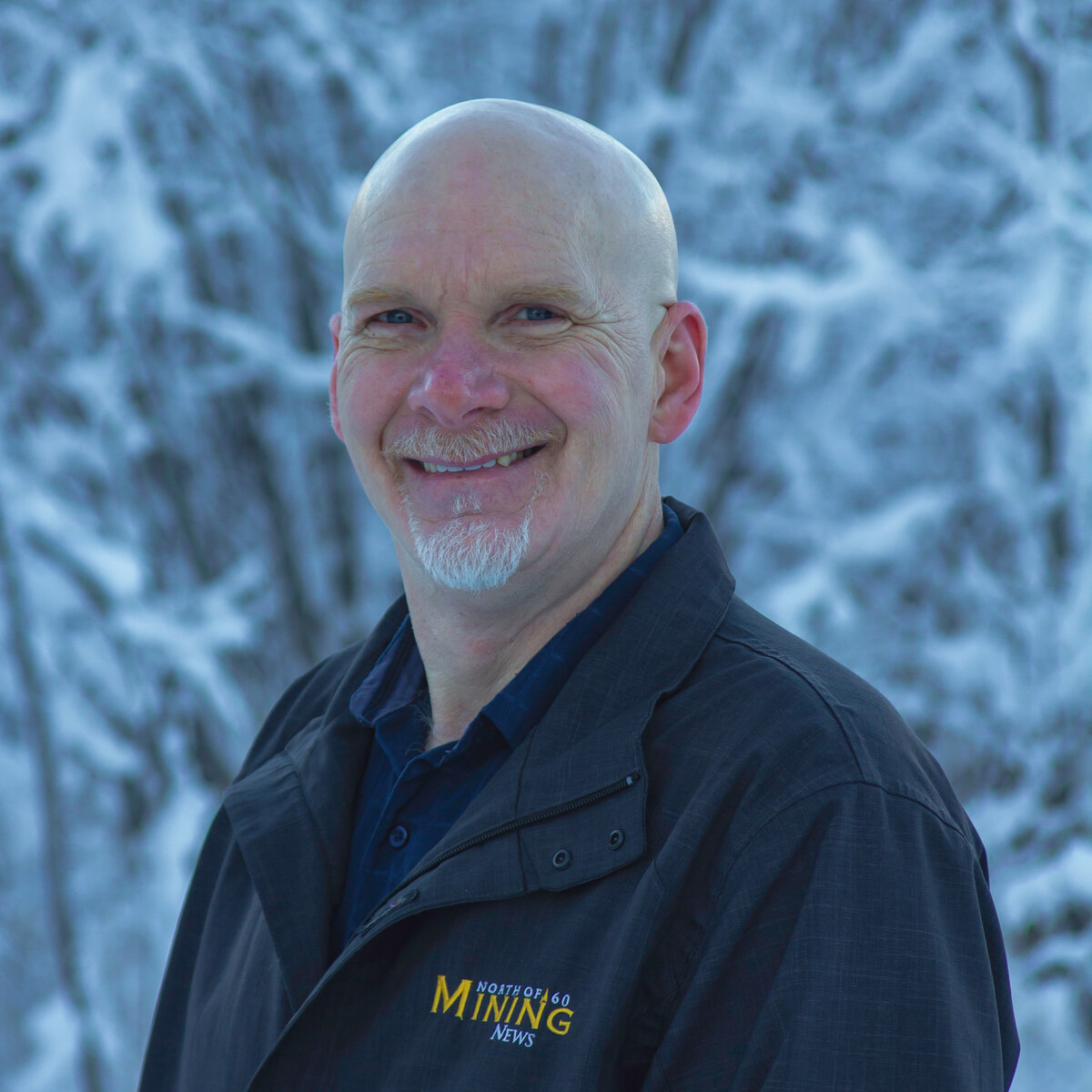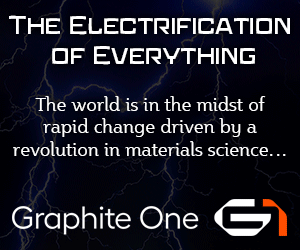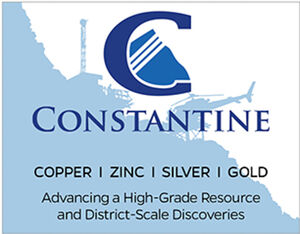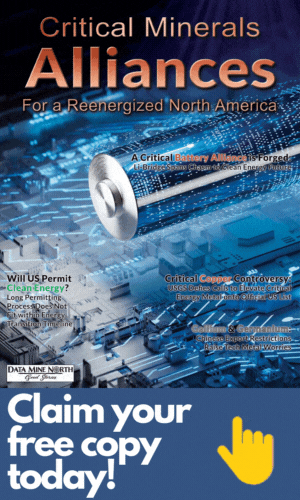Rare earths future hangs in the balance
Keeping up with EVs creates oversupply of non-magnet REEs Critical Minerals Alliances 2023 - September 12, 2023
Last updated 11/20/2023 at 6:39am

Adobe Stock
Maintaining a rare earth balance while delivering magnet REEs to the clean energy and high-tech sectors is a growing issue.
A growing imbalance in the supply and demand for rare earths is creating a challenge for the companies that produce this suite of technology elements and an opportunity for the scientists seeking ways to leverage their unique properties in new and intriguing ways.
While it is true that the global transition to zero-carbon energy and transportation is creating new rare earths demand that threatens to outstrip the global supply, the real disparity has more to do with which of these elements are being demanded by the automotive, green energy, and tech sectors – and, maybe more importantly, those that are not.
While rare earths are often talked about as if they are one commodity, in reality they are a suite of 15 elements that each have unique characteristics that have been enabling and enhancing technologies over the past 60 years.
"It is critical to understand individual REE, instead of dealing with them as a group," the International Renewable Energy Agency inked in a 2022 report on rare earths.
Since being used in the first color television sets in the 1960s, scientists have continually found new ways to apply the seemingly magical properties of this suite of tech metals.
These discoveries have evolved into ultra-high-definition flat screens that allow us to stream our favorite shows in more than 1 billion colors; more robust fiber optic signals that help ensure the show does not need to buffer in the middle of a dramatic scene; high-fidelity speakers that are small but fill the room with cinema-quality sound; portable X-ray machines that do not need electricity; the world's most accurate atomic clock; and the list goes on.
While every rare earth has some unique quality to offer, there are seven – neodymium, praseodymium, terbium, dysprosium, samarium, gadolinium, and holmium – with powerful magnetism that is hard to resist when it comes to creating a high-tech future powered by clean energy.
This group of magnet rare earths is used in motors that efficiently transform electricity into motion in the growing line of electric vehicles traveling global highways, wind turbines that transform a gentle breeze into low-carbon electricity to charge those EVS, MRI machines that create detailed images of organs and tissues, and a plethora of other modern wonders.
The ambitious transition to e-mobility and clean energy is creating enormous demand for this subset of the suite of rare earth elements, which is creating an oversupply of other REEs that are mined alongside their more popular counterparts.
"The fact that different REE are co-produced while the markets for them are diverging means that some are scarce while others are oversupplied. This divergence will grow in the coming years," IRENA penned in its report.
EVs drive a balance problem
The growing rare earths divergence is underscored by Stellantis' mid-2023 agreement to buy rare earths from a future mine at NioCorp Developments Ltd.'s Elk Creek critical mineral project in Nebraska.
Stellantis is not interested in all 14 rare earths found in the Elk Creek deposit. Instead, the global automaker best known in North America for its Dodge, Jeep, and Ram brands entered into an agreement with NioCorp for future supplies of four magnet REEs – neodymium, praseodymium, dysprosium, and terbium – it will need for its expanding line of EVs.
"By working with partners like NioCorp, we are taking important steps, with the aim of decarbonizing mobility and ensuring strategic supplies of raw materials necessary for the success of the company's global electrification plans highlighted in our Dare Forward 2030 strategy," said Maxime Picat, chief purchasing and supply chain officer at Stellantis.
While having a preliminary commitment from Stellantis is bolstering NioCorp's endeavors to monetize the magnet rare earths at Elk Creek – an American Midwest mine project that is better known for its rich stores of niobium, titanium, and scandium – the company will need to look elsewhere for buyers of the other REEs also found in the deposit.
This is a common theme across the rare earth sector. There are no neodymium, praseodymium, dysprosium, or terbium mines – just rare earth mines with some mix of the 14 stable REEs.
This is resulting in stockpiles of less demanded rare earths stacking up as mining and processing facilities endeavor to keep pace with the clean energy transition.
This growing overabundance of some REEs and undersupply of others is creating a widening spread in the rare earth prices. In August, a kilogram of 99.9% cerium oxide was selling for about US$2.50, while 99.5% neodymium and praseodymium oxides were selling for roughly US$50/kg, and 99.99% terbium oxide was fetching around US$590/kg.
This means that the value of a deposit is not determined so much by the total rare earth oxides it contains as the quantities of highly demanded rare earth oxides it has to offer.
At the Mountain Pass Mine in California, for example, lanthanum and cerium make up more than 80% of the total rare earths contained in the deposit. The value of the only mine operating in the U.S., however, lies in the neodymium and praseodymium, which only make up approximately 16% of the total rare earths but roughly 80% of the value of the REEs in the Mountain Pass deposit.
"The rare earth balance problem continues to be an issue for U.S. miners," the U.S. Department of Energy penned in a paper on the rare earths supply chain.
A hidden opportunity
The clean energy-driven rare earths imbalance, however, may be creating a hidden opportunity for technology and material scientists exploring new ways to utilize special properties of the elements on the periodic table for the betterment of modern living.
And just because a rare earth does not have magnetic qualities does not mean it does not have exceptional properties waiting to be unlocked.
"There are literally hundreds of uses for rare earths – they are unique materials, almost alchemistical magic," said Michael Silver, CEO of American Elements, a Los Angeles-based distributor of rare earths and thousands of other advanced materials.
Materials scientists are continually growing this list with new discoveries that utilize the seemingly magical qualities of rare earths.
DOE has tackled the rare earth balance problem head-on by tasking its national labs to find new uses for oversupplied rare earths. Here is a rundown of REE balance projects being carried out under this endeavor:
Accelerated Alloy Deployment and Rapid Assessment – Ryan Ott, a materials scientist and engineer at the Ames National Laboratory, is working to enhance usage of overly produced rare earths, such as cerium, and decrease the usage of critical elements, such as neodymium. This work includes investigating 3D printing and other technologies to create cost-effective, high-performance magnets and high-temperature aluminum alloys that use abundant REEs. Given the impending need, the Ames team is working to accelerate the timeframe that these REE balance technologies are developed.
Cerium Gettering of Copper and Iron in Aluminum Alloy Recycling – Also led by Ott, this project is exploring the improvement of energy efficiency and economics of aluminum recycling by using abundant rare earths, such as cerium. The Ames Lab research team has demonstrated that the addition of small amounts of cerium to aluminum increases alloy tolerances to impurities, such as copper and iron, and improved overall corrosion resistance. These additions also allow for lower-quality aluminum to be used in the production of high-value alloys, reducing the need for both energy and cost-intensive high-purity aluminum additions. Research continues in opportunities that would compound cerium deterioration benefits with the focused addition of aluminum.
Al-REE Alloy Development for Advanced Manufacturing (AL-REE ADAM) – Hunter Henderson, a materials engineer at the Lawrence Livermore National Laboratory, is leading a team seeking to correct the rare earth imbalance by developing high-volume and high-value applications for cerium. This project demonstrates that metal 3D printing of aluminum-rare earth element alloy forms an internal nanostructure that is resistant to degradation. The team found that this 3D-printed aluminum-cerium alloy outperformed the aluminum currently used in aerospace and defense components. These alloys also demonstrate enhanced thermal performance, which adds to their value and the cerium that goes into them. The team will scale up for demonstration and continue to improve performance at room temperature strength.
DOE's Advanced Materials and Manufacturing Technologies Office and Critical Materials Institute, which are leading this work, says the superior aluminum-cerium alloys are helping tackle the rare earths balance problem "by finding new ways to use cerium that will shore up market demand for an abundant REE and create more value from domestic rare-earth mining operations."
More balanced Wyoming deposit
As the EV revolution unfolds, deposits with a mix that leans more heavily toward magnet rare earths are more valuable and will contribute less to the REE balance problem.
One U.S. deposit enriched with the rare earths needed for high-tech and the energy transition is found at Rare Element Resources Ltd.'s Bear Lodge project in northeastern Wyoming.
According to the most recent calculation, Bear Lodge hosts 18 million metric tons of measured and indicated resources averaging 3.05% (1.2 billion pounds) rare earth oxides. Not only is this deposit large and high-grade, but it has healthy quantities of critical REEs.
Neodymium and praseodymium, the two main ingredients in the magnets for EV motors and other high-tech devices, make up 22.8% of the total rare earths contained in the Bear Lodge deposit. Four other magnet REEs – dysprosium, gadolinium, samarium, and terbium – make up another 5.2%.
While cerium and lanthanum still comprise the bulk of the rare earths by weight, about 70%, the ratio of non-magnet to magnetic REEs in this deposit is high.
Rare Element's plans to develop a mine and processing facility in Wyoming has drawn support from both the public and private sectors.
In 2021, DOE provided the company $21.9 million for a plant that demonstrates an innovative rare earths processing and separation technology pioneered by General Atomics.
General Atomic affiliate Synchron, which owns a 54.8% stake in Rare Element, processed 1.1 metric tons of Bear Lodge ore through a pilot plant in Germany to produce 13.6 kilograms of neodymium-praseodymium oxide at commercial grade.
Rare Element says the innovative process has been further optimized to offer environmental and cost advantages over other REE separation technologies.
The company is now scaling this technology up with a demonstration plant in Upton, Wyoming, that will process roughly 900 metric tons of ore averaging around 10% rare earth oxides stockpiled at Bear Lodge.
In addition to the DOE grant, the Upton demo plant received backing from the Wyoming Energy Authority, which awarded the company $4.4 million for the project.
"Given that Wyoming is home to one of the highest-grade rare earth deposits in North America, we felt supporting Rare Element Resources' demonstration plant in Upton was vital," said Wyoming Energy Authority Executive Director Glen Murrell.

Peggy Greb, U.S. Department of Agriculture
The low-carbon energy transition is creating enormous demand for magnet rare earths but an oversupply of more abundant REEs. Clockwise from top center: praseodymium, cerium, lanthanum, neodymium, samarium, and gadolinium.
The combination of a high-grade mine and separation plant will put Wyoming on the map as a hub for essential rare earths.
"We understand, as does Wyoming, that our project will serve as a cornerstone for the rare earth industry in Wyoming and America while providing a venue for worker training in rare earth processing and separation," said Rare Element Resources President and CEO Brent Berg.
With the demo plant slated to start in the next year, Rare Element can begin looking at a commercial operation that fully unlocks the larger rare earth potential at Bear Lodge.
The current Bear Lodge deposit would support a mining operation that could produce roughly 6,800 metric tons (15 million lb) of rare earth oxides annually over a 45-year mine life, according to a prefeasibility study completed in 2014.
CORRECTION: This article was updated to correctly state the number of magnetic rare earths.





















Reader Comments(0)